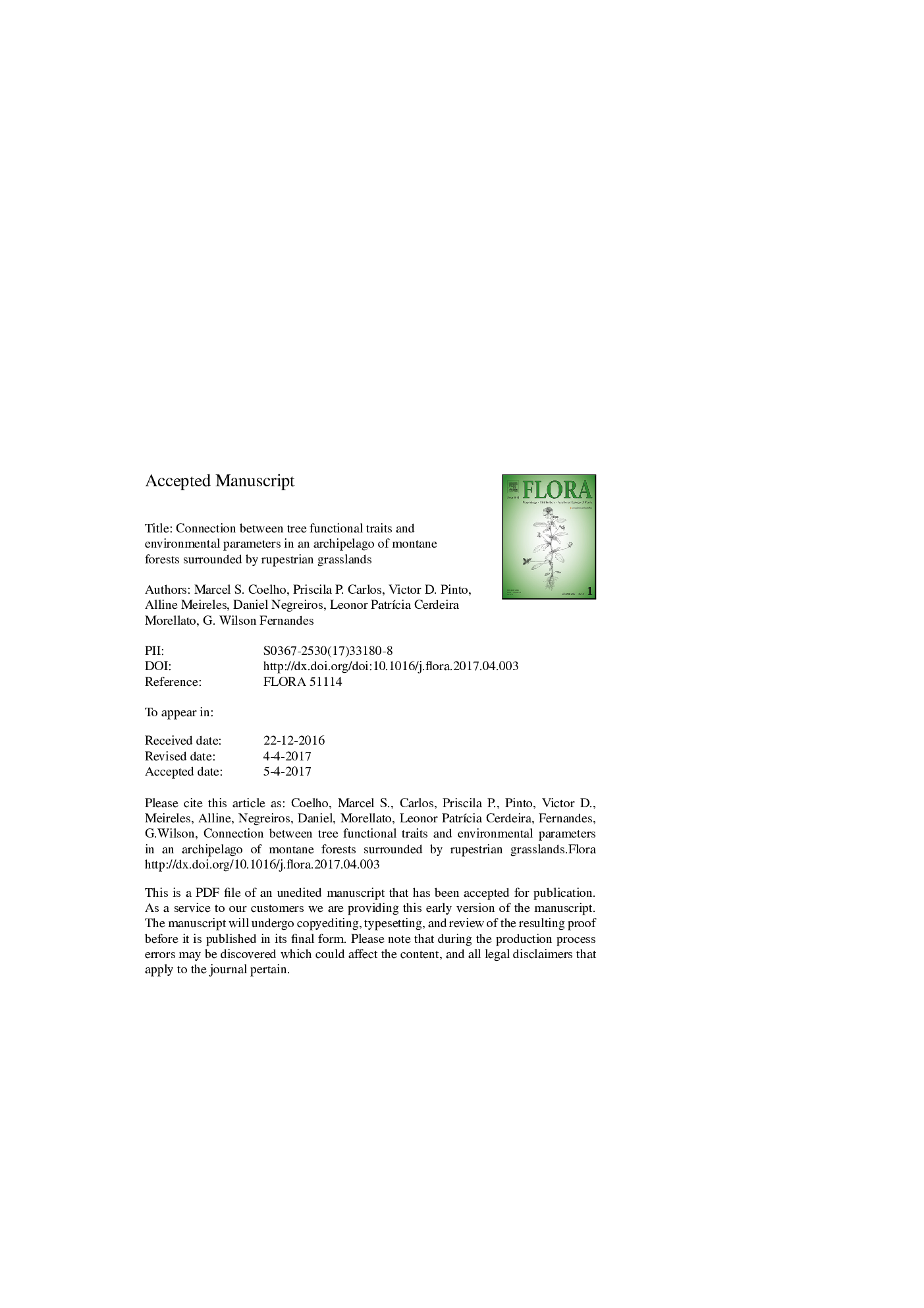| Article ID | Journal | Published Year | Pages | File Type |
|---|---|---|---|---|
| 8470221 | Flora - Morphology, Distribution, Functional Ecology of Plants | 2018 | 26 Pages |
Abstract
Forest islands are unique habitats standing out across mountains dominated by rupestrian grassland in southeastern Brazil. In this work we evaluated the relationship between the plant species functional traits (number of ecoregions in which a species occurs, potential height, mean height, mean basal area, mean leaf area) and ecological variables (leaf damage from chewing herbivores, the number of individuals) with environmental parameters (physical and chemical properties of the soil, canopy cover) of the tree communities in an archipelago of montane forest islands immersed in rupestrian grasslands. We found a strong connection between the traits of tree species and environmental parameters; habitats associated with high soil fertility and canopy cover (leaf area index) harbored species with high structural values (i.e., height and basal area), broad distribution among Brazilian ecoregions, high rates of leaf damage from chewing insects and fewer individuals. Habitats with low soil fertility and canopy cover values harbored species with low structural values, restricted geographic distribution and low rates of leaf damage by chewing insects. Although physical parameters play an important role in the establishment of forest islands, our results point to chemical indicators of soil fertility as a relevant environmental promoter, influencing the composition and structure of island tree communities. The impact of local habitat parameters on the tree species functional traits showed that habitat heterogeneity is essential in structuring tree communities in this natural archipelago of forest islands. We advocate that understanding the connection between habitat parameters and species functional traits can help to predict the ecological consequences of anthropogenic or natural impacts to those forests, supporting the development of effective conservation strategies.
Related Topics
Life Sciences
Agricultural and Biological Sciences
Ecology, Evolution, Behavior and Systematics
Authors
Marcel S. Coelho, Priscila P. Carlos, Victor D. Pinto, Alline Meireles, Daniel Negreiros, Leonor PatrÃcia Cerdeira Morellato, G. Wilson Fernandes,
